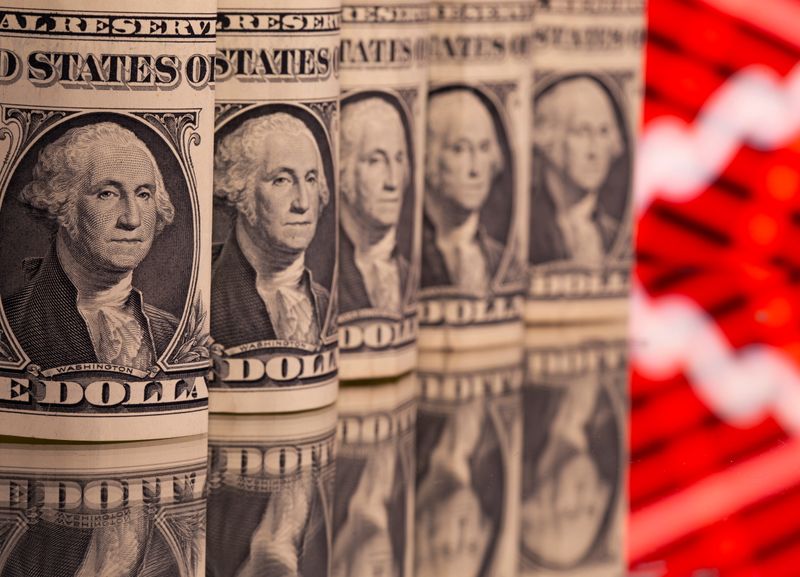By Kevin Buckland
TOKYO (Reuters) – The safe-haven U.S. dollar remained broadly weaker on Wednesday as Treasury yields retreated further, restoring some calm to global markets and reigniting demand for riskier assets.
Commodity-linked currencies including the Australian dollar and the Norwegian krone held on to sizeable two-day advances.
The lower U.S. bond yields also sapped some of the dollar’s allure among fellow low-yielding currencies, with the yen and Swiss franc bouncing off multi-month lows overnight.
Bonds have been at the centre of a storm in financial markets in recent weeks, following a dramatic jump in yields globally – but led by Treasuries – in defiance of central bankers’ insistence on patience in normalising monetary policy as economies recover from the COVID-19 pandemic. Global stocks were knocked from near record highs, and prices of commodities wobbled.
Fiscal stimulus has fuelled market expectations for a rapid recovery, with President Joe Biden close to passing a $1.9 trillion spending package.
An index of the dollar against six of its major peers was little changed early in the Asian session Wednesday, after dropping back from a nearly one-month high overnight.
The Aussie rose slightly to $0.7820, building on gains of about 0.7% the previous two days, after data showed the Australian economy grew much faster than expected in the fourth quarter.
The krone traded mostly flat at 8.4684 per dollar after advancing about 1% in each of the past two sessions.
“Risk sentiment dynamics are the key driver of currencies in general right now,” said Shinichiro Kadota, senior currency strategist at Barclays (LON:BARC) Capital in Tokyo.
“Equity market reaction will be one of the key determinants of the impact of this move in global rates on FX markets.” The lull in volatility could prove fleeting if an improving U.S. economy reignites bond selling, with closely watched monthly payroll figures due on Friday.
U.S. Federal Reserve Governor Lael Brainard stuck to recent dovish rhetoric overnight, saying there is still a lot of ground to cover on jobs and inflation. But she also said she is “paying close attention” to bond market developments, where “the speed of the moves caught my eye.”
Earlier on Tuesday, the Reserve Bank of Australia recommitted to keeping interest rates at historic lows.
Meanwhile, European Central Bank board member Fabio Panetta said the bloc’s monetary authority should expand bond purchases or even increase the quota earmarked for them if needed to keep yields down. The euro was little changed at $1.20880 after rising more than 0.3% in the previous session, when it rebounded from an almost one-month low below $1.20.
The dollar added 0.2% to 106.875 yen, another safe-haven currency, consolidating after its retreat from the cusp of 107 overnight, a level unseen since August.
The U.S. currency rose 0.1% to 0.91530 francs, after rising as high as 0.9193 for the first time since November.
TD Securities closed out its model long USD-CHF position, taking profit after entering at 0.90 francs, ahead of its 0.9250 target.
“We take profit just shy of our target out of an abundance of caution,” TD strategists wrote in a note.
“Given the carnage in the U.S. rates space recently, we think the market might be disproportionately sensitive at this time, causing some temporary positioning recalibration.”
In cryptocurrencies, bitcoin consolidated around $49,000, following a sharp retreat after hitting a record high of $58,354.14 on Feb. 21.



